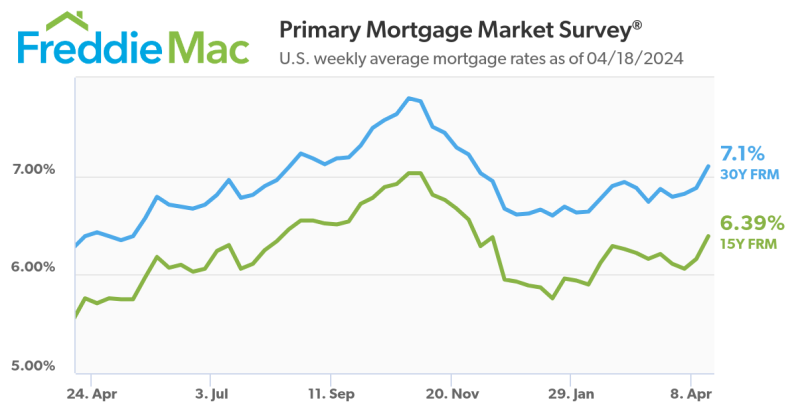Advertisement
Rates drift lower on reports of economic weakness: Other reports point to progress
Lessons From the 2007-08 Credit Crunch: What Should be Done?MortgagePress.comcredit crunch, mortgage market regulation, crisis
In light of the consequences that followed the policy responses
to the "credit crunch" of 2007-2008, regulators will need to
increase their vigilance to avoid future crises, based on a paper
published by the Federal Reserve Bank of St. Louis.
Paul D. Mizen, professor of monetary economics and director of
the Centre for Finance and Credit Markets at the University of
Nottingham, and a visiting scholar at the St. Louis Fed, looked at
the market reactions and policy responses to the credit crunch for
the September/October issue of Review, the Reserve Bank's
bi-monthly journal of economic and business issues. The publication
is also available online at the St. Louis Fed's web site, http://research.stlouisfed.org/publications/review.
Mizen noted that from 1993 to 2006, a number of macroeconomic
conditions sowed the seeds of the credit crunch.
"Low interest rates encouraged greater borrowing, low savings
ratios and higher debt to income levels for consumers in
industrialized countries," said Mizen. "With low volatility, steady
growth and increasing house prices, lenders did not perceive great
risks. Revolving debt in the form of credit card borrowing
increased significantly and, as prices in housing markets across
the globe increased faster than income, lenders offered mortgages
at ever higher multiples (in relation to income), raising the level
of secured debt to income. Credit and housing bubbles reinforced
each other."
The innovation in mortgage-backed securitization to lower
quality subprime mortgage categories created assets with greater
risks than the issuers or the end-investors appreciated. "Sellers
of subprime mortgage securities mispriced risks by using models
that assumed house prices would continue to rise while interest
rates would remain low," Mizen said. "This was a false assumption,
but many other practices reinforced the error as buyers and sellers
of subprime mortgage securities and collateralized debt obligations
failed to assess risk characteristics properly. There was a failure
in the incentives mechanism to assess risks carefully because the
risk would be held by others."
Mizen said when risks were realized in mid-2007, there was a
crisis of confidence in the financial markets as banks stopped
funding short term paper, MBS and CDO issuance slumped, and banks
reduced the lending at more than one month to maturity as they
assessed the implications of the newly perceived risks.
"While many analysts have stated, rightly, that the root of the
problem lay with the subprime market," said Mizen, "any number of
other high-yield asset classes could have provided the
trigger— example, hedge funds, private equity, or emerging
market equity. But, it was house prices rather than equity or
commodity prices that fell first, and therefore the crisis was
triggered by subprime-related assets."
Assessing the overall response by central banks, Mizen said,
"Central banks handled the crisis well from the perspective of
providing liquidity to the markets, but spreads remain larger than
before the crunch."
At the same time, however, he believed that the central banks
"did less well in providing funding liquidity for failing
institutions" and that the ultimate consequences to the taxpayer
from these actions cannot be known right now. In the United
Kingdom, the Bank of England's rescue of Northern Rock was not
regarded as a success and regulatory reforms will need to be made
to avoid the same problems in the future.
In the United States Mizen said, "The Bear Stearns crisis
resolution process seems to have delivered what the Federal Reserve
set out to achieve. The crisis was dealt with swiftly, and as a
result the financial system did not face a settlements equivalent
to a 'payments problem.' The owners and fund managers of the
investment bank were effectively punished for taking risky
strategies." He added, however, that the cost to the taxpayer is
yet to be determined and under the support operation for the GSEs,
Fannie Mae and Freddie Mac, the scale of the lending is much
greater, with potentially much greater cost to the taxpayer.
Mizen believes reforms will need to be made to the regulations
imposed on banks, and he questioned the extent to which banks
should be allowed to avoid regulation by using off-balance-sheet
vehicles to conduct business in structured finance products.
"Questions also need to be asked about the incentive structures
facing originators and investment banks that created the complex
products for resale, the regulation of ratings agencies in rating
complex financial products, and the use of fair value accounting,"
Mizen said. "Regulators need to ask questions about an
institution's own assessment of the risk being carried, but they
also need to consider the systemic risks that arise when the
actions of an individual bank impinge on other banks or the
markets."
Mizen said the Fed's new rules for higher-priced mortgage loans
should improve regulation of the U.S. mortgage market, but he
suggested, "the setting of 'gold standards' for originators to
match products (for example, alternative mortgages) offered by the
GSE's or minimum borrower standards would also help."
He said several lessons from this period that can be applied to
potential future crises, among them:
•The need to create incentives that ensure the
characteristics of assets "originated and distributed" (in which
financial institutions lend money and sell the claims to a third
party) are fully understood and communicated to
end-investors.
•Central banks should review and evaluate the effectiveness
of their procedures to inject liquidity into the markets at the
time of crisis and their response to funding individual
institutions.
•Regulators will need to consider the capital requirements
for banks and off-balance sheet entities that are sponsored or
owned banks, evaluate the scope of regulation necessary for ratings
agencies, and review the usefulness of stress testing and "fair
value" accounting.
For more information, visit www.stlouisfed.org.
About the author





